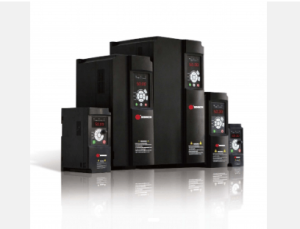Common Types of High-voltage Inverters
1. Voltage Inverter: The motor speed is adjusted by adjusting the output voltage. It is suitable for motor control under low power and low load conditions and is commonly used in most industrial applications.
2. Frequency Inverter: The motor speed is adjusted by adjusting the output frequency. It is suitable for motor control under high power and high load conditions and is suitable for some special industrial occasions.
3. Vector Inverter: More precise speed and torque control is achieved by vector control of the motor voltage and current. It is suitable for motor control that requires high speed response and operation stability.
High-voltage inverters are classified by modulation method
1. PWM (pulse width modulation) type: voltage and frequency changes are achieved by adjusting the pulse width, and are widely used in various industrial fields.
2. SVPWM (space vector pulse width modulation) type: higher efficiency and lower harmonics are achieved through space vector control, suitable for high-performance applications.
3. DTC (direct torque control) type: fast dynamic response is achieved by directly controlling the motor torque and flux, suitable for high-precision control occasions.
High-voltage inverters are classified by use
1. Fan and water pump inverters: specially designed for fans and water pumps, with good energy-saving effects and smooth starting.
2. Compressor inverters: used for compressor loads, can provide high starting torque and stable operating performance.
3. Conveyor belt inverters: used for conveyor belts, conveyors, etc., with wide speed regulation range and fast dynamic response.
Features of high-voltage inverters
1. Wide speed regulation range: High-voltage inverters can achieve continuous speed regulation of motors with a wide speed regulation range, meeting the precise control requirements under different loads and working conditions.
2. Low energy consumption: High-voltage inverters use advanced power electronics technology and control algorithms to achieve high-efficiency motor control and reduce system energy consumption.
3. Easy operation: High-voltage inverters have a friendly human-machine interface and rich communication interfaces, which can realize remote monitoring and control, and facilitate operation and maintenance.
4. High reliability: High-voltage inverters use advanced protection and self-diagnosis functions to ensure safe and reliable operation of equipment. At the same time, they can also realize multiple protection functions such as grid-side grid connection and DC bus to enhance the stability of the system.
5. Strong environmental adaptability: The design has good electromagnetic compatibility and anti-interference ability, and can adapt to complex industrial environments.
High-voltage inverters occupy an important position in modern industrial control systems, which can improve the efficiency, stability and safety of the system and adapt to various complex application requirements.

